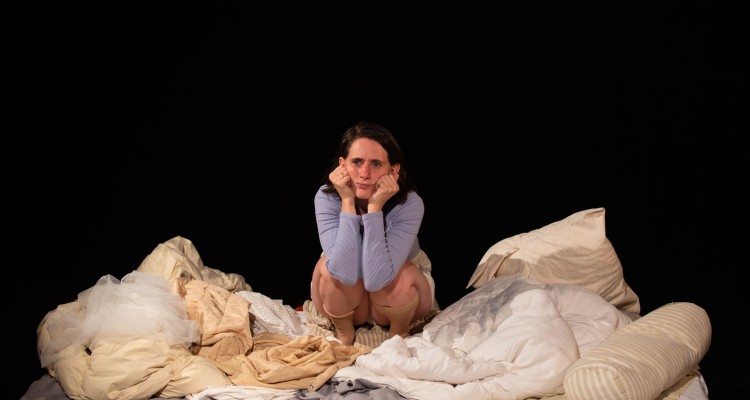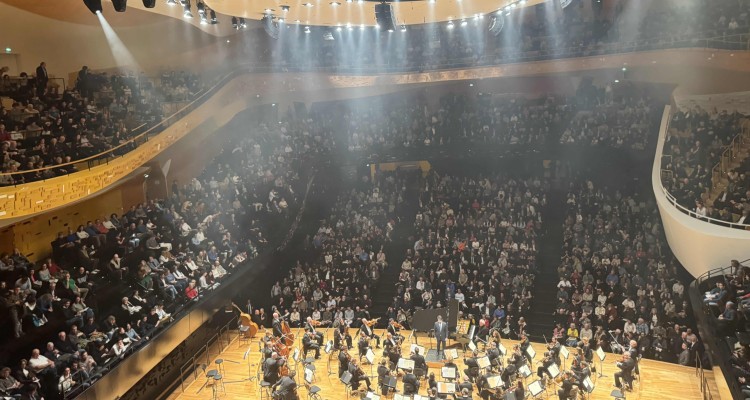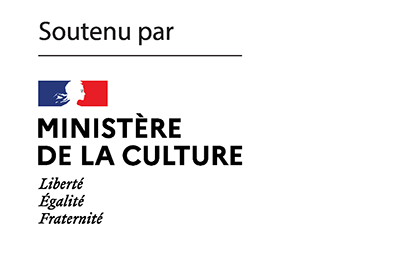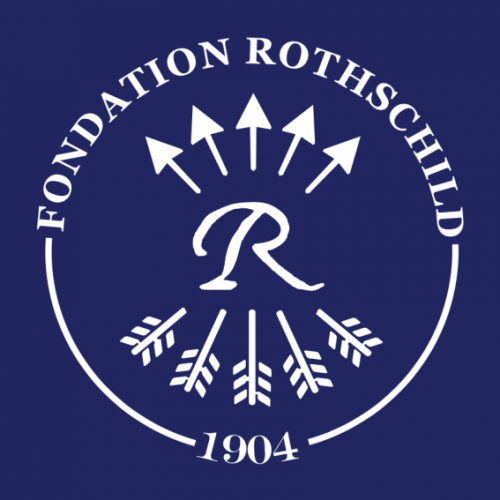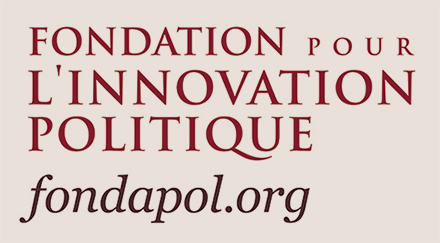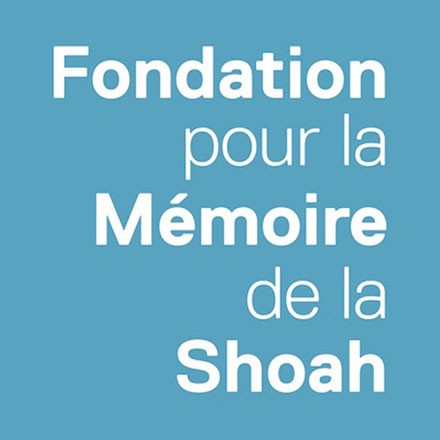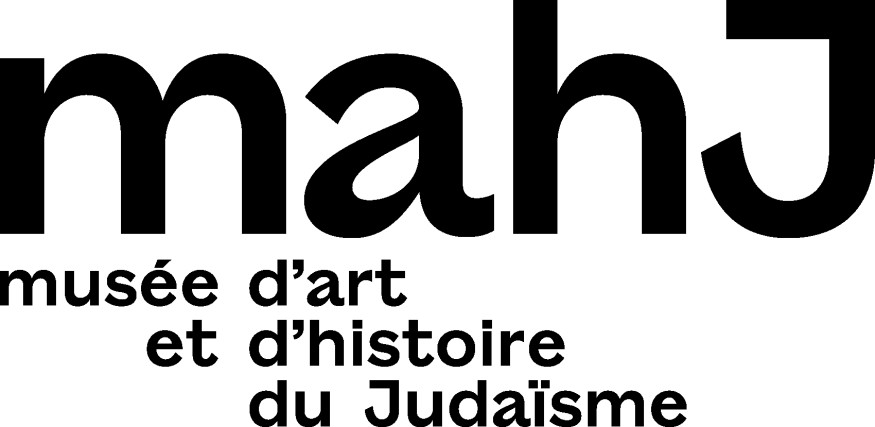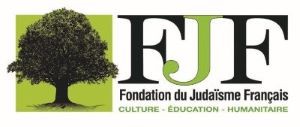What happened that caused the newspaper published by the Zentralrat der Juden in Deutschland, the Central Council of Jews in Germany, to demand that the Minister of Culture resign? The presence of a blatantly anti-Semitic painting in the world’s largest contemporary art exhibition – the documenta, which has been held every five years since 1955 in the city of Cassel. It was due to the presence of the painting but also the result of a long debate before the fact about the anti-Semitic character of the 2022 edition of documenta, on which the minister did not want to take position in the name of freedom of art. Entrusted this year to an Indonesian artists’ collective, which invited other artists’ collectives from the Global South or related to it through their works, documenta relied on a format open to the world and the concerns of the countries of the South. They wanted to defend the idea of an activist art and transform the exhibition itself into a political work, protesting against imperialism, capitalism, the exploitation of humans and of the earth, as well as against all forms of oppression. In this beautiful program, there is no room to be concerned with anti-Semitism or to be concerned with the hatred of Jews in one’s own ranks. Julia Christ reports on the crazy sequence of discussions and false humility consequent to the appearance of this work.
At the beginning of July 2022, Julia Christ recounted a crazy week of discussions and apologies all in false humility around the incriminated work. Today, a week after the closing of the exhibition, she reports on the last moments of the debate provoked by the event.
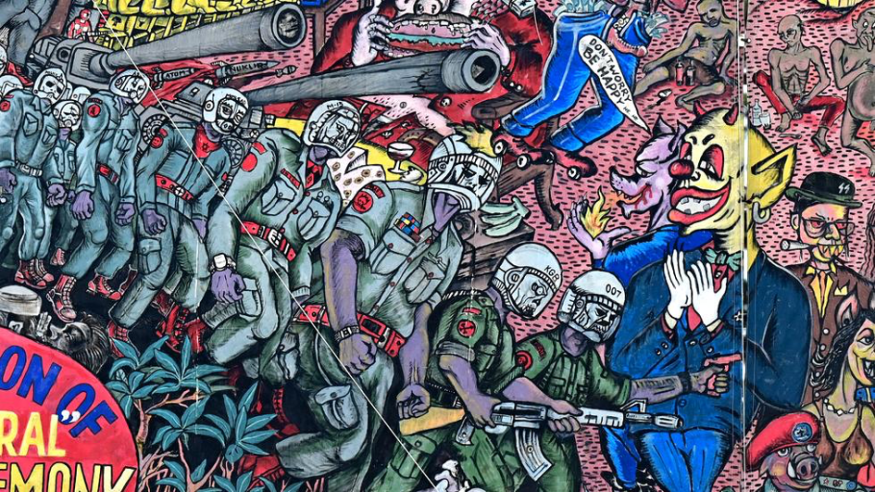
There are still “sows of Jews” adorning cathedrals in present-day Germany or in countries formerly under German influence. These sculptures or bas-reliefs usually depict a sow whose udders are suckled by Jews, while other Jews lick the sow’s tail or even her bottom. The oldest of these representations gives the sow a Jewish face, recognisable by its pointed hat. In general, however, the animals are sculpted in their natural form, without hybridization. The Jews, on the other hand, always have a human head. The Middle Ages never ventured to express their hatred by putting a pig’s head on them. Later antisemitism remained relatively faithful to this pattern: while there are known representations of pigs or octopuses with caricatured Jewish faces, there are few instances of a Jew with an animal head. In this respect, documenta 15, which is currently taking place in the city of Kassel, has kept the promise on which it has based its international reputation since 1955: to show, to document, what is new on the art scene. Thus, an artwork was exhibited in which the Jew wore a pig’s head instead of the pig a Jew’s head.
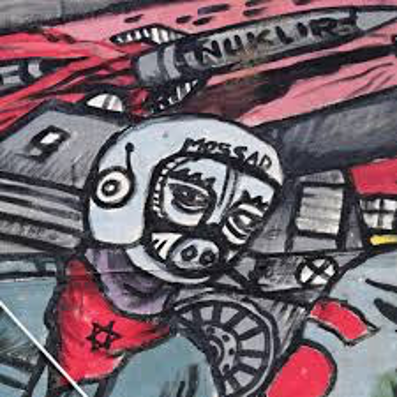
Needless to say, this piece caused a scandal as soon as it was discovered. Found on Sunday 19 June, the fact generated more than a hundred articles on the subject in the space of a week, and this in the country’s largest daily and weekly newspapers. The FAZ alone, Germany’s leading newspaper, devoted around twenty-five texts to the subject in only five days.
Truth said, the responsible for the documenta, both in terms of its logistic and artistic organisation, did everything possible to contribute to the public’s astonishment: the artwork in question was not mounted until after the official press visit, so that when the German President gave his opening speech on Saturday morning, and recalled the limits of artistic freedom when it comes to the right to be anti-Semitic, he could not have been aware of the cruel irony of his words.
If he felt obliged to make this reminder, it was because the discovery of the work followed a debate that had been going on for several months already, precisely on the anti-Semitic leanings of this documenta, the organisation of which was entrusted not to curators, but to a collective from the global South (ruangrupa). In the name of the global South’s conception of art, it entrusted other art collectives from the Southern Hemisphere with the task of creating the exhibition, either by showing their own work or by inviting other collectives, or both. This pyramid system, which was supposed to help break down the typically Western hierarchical logic of the art world, where a curator in charge of his or her own choices decides what he or she considers to be art worthy of being exhibited, had the immediate consequence that no one had an overview of the pieces that were going to be exhibited. The overall work of documenta as an exhibition would prove to be a mystery to everyone, including its organisers, until the opening.
What could be seen, however, even before this opening, as soon as the process of inviting collectives had been completed, was that among the invited collectives, there were none that were Israeli – which in a sense was defensible, since Israel probably does not count among the nations of the global South. That Palestinian artists’ collectives were invited, on the other hand, was self-evident, notwithstanding the fact that Israel and the Palestinians occupy adjacent territorial spaces. This policy of invitation at least had the merit of making explicit in a factual way what those in charge of documenta meant by “Global South”, i.e. the oppressed of the earth, whether they are now or have been in the past, provided that their oppressive situation can be linked to past or perceived colonisation in the present. But none of this would have launched a debate about the possible anti-Semitic character of the exhibition, if among the invited collectives there had not been several who expressed their solidarity with the oppressed Palestinians through open support for BDS. It did not help that several members of the selection committee responsible for choosing ruangrupa as “curator” also displayed open support for BDS.
A cycle of debates with the promising title “We need to talk”, which was intended to discuss the validity of the accusations of anti-Semitism against the design of the documenta, was finally cancelled in May 2022, after the president of the German Jewish Council pointed out to the German Minister of Culture that during the three days of planned debates, no representatives of the German Jewish community had been invited. The justification for this outright cancellation, initiated by ruangrupa itself, is full of complaints about “institutions” preventing open discussion. It reads, in retrospect, like a bad joke: “The documenta will first start with the exhibition and let it speak for itself, in order to continue the discussion objectively and on that basis. At the moment, the goal that documenta wanted to achieve with this series of debates, namely to open up a multi-perspective dialogue beyond institutional frameworks, seems hardly achievable.”
Unfortunately, the exhibition itself, the objective basis for a discussion that is not limited by what the organisers perceived as the narrow institutional frames of thought, turned out to be littered with anti-Semitism. Next to the pig-headed Jew wearing a cap with the inscription “Mossad” was, on the same canvas – made by the collective Taring Padi and entitled People’s justice – another depiction of the Jew as a sharp-toothed vampire wearing a hat with SS runes.
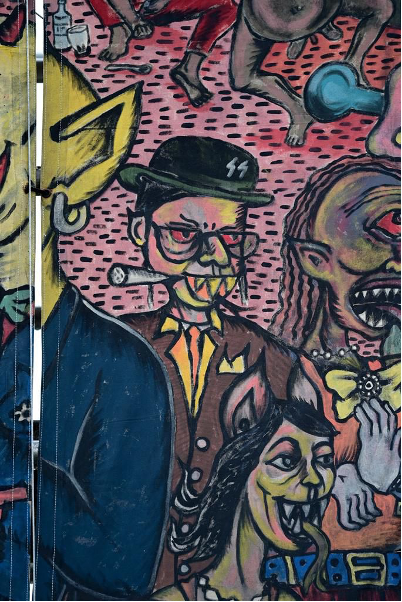
Some have also questioned whether artist Mohammed Al Hawajri’s “Guernica Gaza” series, which identifies the total destruction of Guernica by the Wehrmacht with the actions of the IDF in the Gaza Strip, is not just a bit out of line. And what about the film at the centre of the work of the “Subversive Film” collective that wants to document the “‘anti-imperialist solidarity relations’ between Japan and Palestine” through the collaboration between the Japanese Red Army terrorist group and the Popular Front for the Liberation of Palestine, which counts among its claims to fame the murder of 26 civilians in the 1972 Lod airport bombing? An objective basis for discussing suspicions of anti-Semitism in relation to this documenta was thus effectively provided by the exhibition. However, in view of the subsequent discovery of the anti-Semitic cartoon canvas, it must be assumed that it was not “objective” enough for the organisers.
Therefore, in a first step, the general management of the documenta, the ruangrupa and Taring Padi decided to cover the painting with a huge black tarpaulin. As the work was located in the central square of the urban space where the documenta takes place, one can imagine the effect of this installation of a huge sign of mourning in the middle of the exhibition. Let there be no mistake: the fact that this was an expression of grief is not a malicious “Western” interpretation. That was the declared intention. In an initial press release from the documenta’s artistic director, the Taring Padi collective explained itself as follows:
« Taring Padi is a progressive collective that has been campaigning to support and respect diversity. There is no record in our work that aims to portray any ethnic groups in a negative way. Figures, icons, caricatures, and other visual vocabularies in our works are always culturally specific to our own experiences.
The display of People’s Justice in Friedrichsplatz is the first presentation of the banner in a European and German context. It is not meant to be related in any way to antisemitism. We are saddened that details in this banner are understood differently from its original purpose. We apologize for the hurt caused in this context. Therefore, with great regret, we cover up the work. This work then becomes a monument of mourning for the impossibility of dialogue at this moment. »[1]
So the covering of the canvas was to acknowledge the sad fact that no dialogue was possible. And in the minds of those in charge, it had to remain, covered, in place, to expose this impossibility. But a dialogue about what? Clearly, about the fact that one culture can resort to anti-Semitic caricatures while another cannot. About the fact that what in one context is considered normal, even progressive, in another context is considered insulting. In short, what Taring Padi wanted to mark by covering the canvas was the provincialism of Europe and Germany in particular, the fact that its categories for describing a certain mode of representation were only one possible way of describing reality. That the West was still unable to recognise its own particularism was worthy of a sign of mourning. The work was not anti-Semitic, that was the first line of defence of the collective and the documenta as a whole, it could just, in the German context, be ‘read'[2] as anti-Semitic.
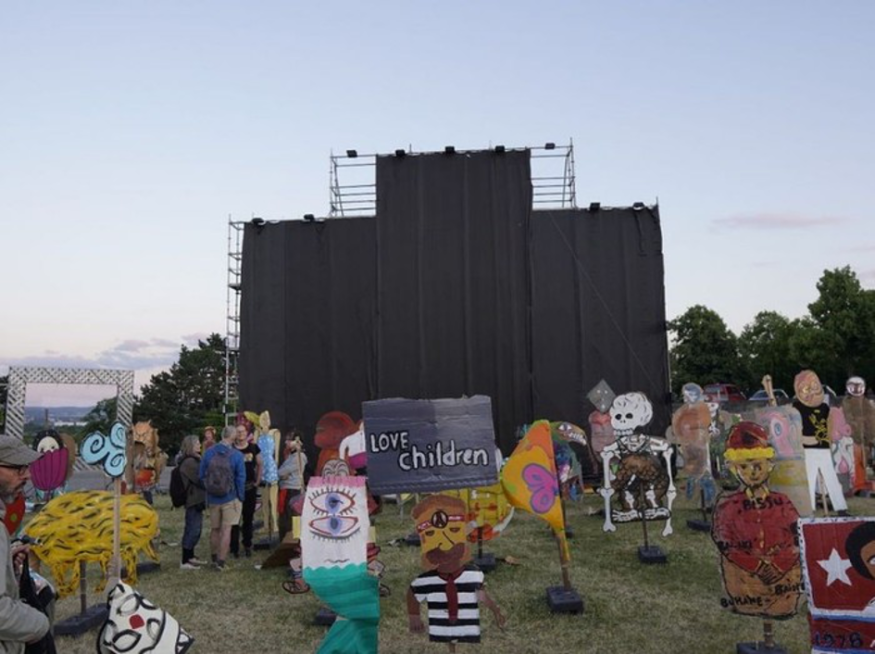
German public opinion, however eager to allow itself to be provincialised, was not willing to forget so quickly that the scandal was the anti-Semitic character of the work and not the fact that Europe was not ready to see it as what it is, namely the expression of a specific culture and an experience of its own. The sanctuarisation of the work by dressing it in black was therefore strongly criticised. The next day, the general director of the documenta, who the day before had supported the discourse on the various possible readings of the work, but who was now being forced to resign from all sides, agreed to remove the work from the exhibition. In the justification given for this change of heart, the tone changes – on the surface:
« Anti-Semitic depictions must have no place in Germany, not even in an art show with a global scope. This also applies expressly with all understanding for the concerns of the global south and the visual language used there. With respect for the diversity of cultural backgrounds, the dialogue that began with documenta fifteen will be continued. »[3]
While it is now acknowledged that the artwork uses anti-Semitic representations, the reference to respect for differences between spaces of cultural experience and the deep understanding expressed for the visual language of the Global South leaves one wondering about the sincerity of this claim. Rather, it seems that the Executive Director accepts to talk about anti-Semitism from a German perspective, while acknowledging that in other contexts this visual language is not anti-Semitic.
Two days later, this suspicion was confirmed. The selection committee of documenta fifteen, the same one that was already in the line of fire even before the documenta opened, as it includes several open supporters of BDS, issued a press release. After explaining that they had only followed the evolution of the exhibition from a distance and therefore could not be held responsible in any way, the first thing they did was to congratulate ruangrupa on its excellent work and to emphasise, enthusiastically, that this documenta “offers a picture of a world made of many worlds, without hierarchy or universalism.“[4]These introductory words invalidate from the outset anything that might follow in terms of regrets or excuses. Indeed, if it is the absence of universalism that deserves the committee’s praise, the accusation of antisemitism in the offending work falls flat. For in order to condemn the anti-Semitic representations on Taring Padi’s canvas, a universal concept of antisemitism is indeed required. At least if one does not want to remain on that stage of the debate, where in Europe, and especially in Germany, these hateful representations of Jews are anti-Semitic, while elsewhere this is not the case.
In the light of this, it is not surprising that the Committee, after this introduction, expresses its regret about the “anti-Semitic cartoons” in three lines, only to follow up with a somewhat surprising statement in the context: « The legacies of European colonialism and the ongoing matrix of power across the world are subjects that touch almost all the world’s living creatures. » Then follows a long passage on the need for the West to finally confront this legacy, which gives way to the paternalistic observation that, in this new dialogue between North and South, ‘mistakes’ will inevitably be made and must be excused in advance if they are made by the South. This leads to the final expression of the committee’s “unconditional support” for the « non-hierarchical pluriverse, to which they [sc. ruangrupa and all the collectives of the documenta] invite all of us to see, discuss and take part. »[5]
Let me be clear: people from the southern hemisphere have the right to “make mistakes”, i.e., in this case, to be unaware of European and especially German “sensitivities” when they paint or speak. As if the problem is that Indonesian artists don’t know anything about the Shoah, and that it is a painful subject for Germans. And not the fact that they paint hateful depictions of Jews. It’s like an Icelandic artist (to take a country far to the north) creating a work that outrageously caricatures black people and then apologising by saying that he didn’t know about the history of slavery. In other words, it is as if one can legitimately express one’s hatred openly, provided that the person one is targeting has not been a victim of oppression in the past.
Absurd as it may seem, this is exactly the line of argument that was to be pursued by the main actors in the case, namely the artists themselves. Their merit, however, is to make it even more explicit, and to do so by underlining that it is not even the victim status of the Jews that is at stake in their desire to learn so as not to make any more “mistakes”, but the all-European sensitivity towards anti-Semitism.
It was only after these statements of the Western documenta leaders that ruangrupa and Taring Padi spoke. Ruangrupa did so on 23 June. After apologising for not having perceived the anti-Semitic character of the cartoons, the collective continued:
« This imagery, as we now fully understand, connects seamlessly to the most horrific episode of German history in which Jewish people were targeted and murdered on an unprecedented scale. »[6]
As a consequence of this belated understanding, the collective promises to « take this opportunity to educate ourselves further about the atrocious history and present of antisemitism » and finally says that it is « here for open and sincere conversation, self-education, and collective learning. We are here as humans with our failures, shortcomings, strength, and courage and we will stay as long as possible to invite and facilitate critical and joyful dialogue with those who accept us as equals. »[7]
The next day, the collective responsible for the work, Taring Padi, finally issued its press release, which took up the themes of discovering the “cruel history of antisemitism” and the desire to learn. So they begin by saying “We have learned from our mistake, and recognize now that our imagery has taken on a specific meaning in the historic context of Germany.”[8] This is followed by a lengthy contextualisation of the genesis of the work, which explains that it is a critique of militarism and violence, and that the reason Israel is depicted as a pig with a Mossad cap is because it is suspected of having contributed to the Suharto dictatorship through secret support. Finally, like Ruangrupa, the collective expresses its conviction that “an open and honest dialogue is the best approach to find solutions and act together”.[9]
This dialogue took place on 29 June at the initiative of Meron Mendel, director of the Anne Frank Centre in Frankfurt. No one from Taring Padi or ruangrupa was willing to participate. Some were in the audience. One of them stood up at the beginning of the debate and said, “We are here to listen and to learn. » Pause. “We are here. »
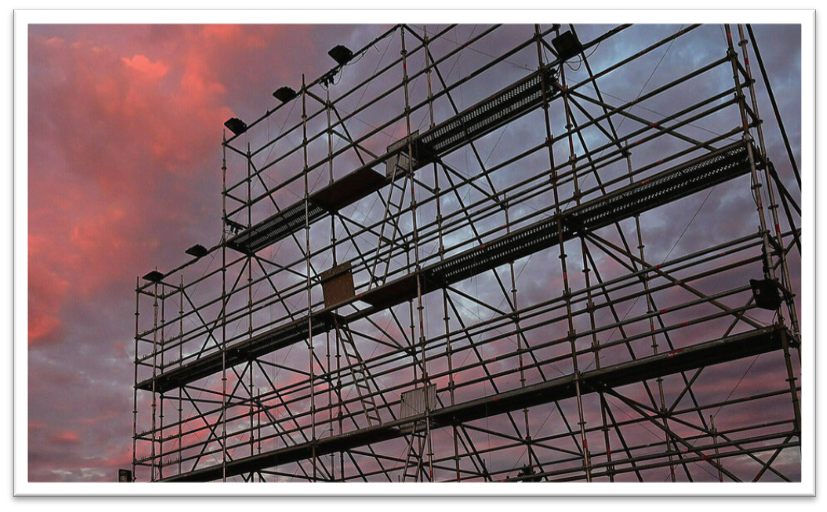
This gesture was interpreted by many as an expression of deep humility. And humility, as we know, is a highly valued virtue in the West. The West is therefore delighted to see so much desire to learn. This allows it to maintain a certain image of people from the Global South as not yet civilised or cultured enough, who are graciously allowed to make mistakes. Strategy or not, the expression of the desire to learn that speaks so well to the West’s unconscious desire for superiority has closed the debate on the real question. The real question is: what do we want to learn more about? The history of the Shoah? But why? Obviously, so as not to hurt … the Germans any more. The idea is so far-fetched, even perverse, that it is hard to conceive, but it is true that in the whole debate, no one has ever apologised to the Jews. To the Jewish community in Kassel, one might say ? Of course, but even in this case, what was in the foreground was that German sensibilities had been hurt. How was this done? By showing caricatures of Jews reminiscent of Nazi caricatures, which inevitably reminds the Germans of their Nazi past. An act that apparently hurts them. So it is not that one wants to learn about the history of the Shoah in order to include the Jews in the category of the “oppressed of the earth”, and to declare oneself in solidarity with them. No: the reason for wanting to know about this history is to avoid hurting the murderers in the future.
This is incomprehensible in view of the documenta’s general programme, which is to point out the West’s crimes against the South, to show the consequences of these crimes up to the present day and to encourage the West to make amends. The ‘universe without hierarchy or universalism’ that the documenta aims to achieve is, in its very form, a critique of the hierarchically organised universe based on universal principles that the West has imposed on the entire world. This critique knows no compassion for the executioners. It wants to hurt, even if it does so by exposing a counter-model through the documenta itself, it wants to confront the West with the crimes and violence that have resulted from this conception of the world, in the hope of inciting it to change.
This Western world welcomes such criticism; it wants to decentre itself, to be open, to give up hurting, despising, hierarchising ‘races’, ‘cultures’, ‘religions’ and ‘genders’. It wants open dialogue on an equal footing. It wants to atone in kindness to the other. To do this, it is prepared to give up, for example, discussing the situation of women in certain ‘cultures’ or that of homosexuals or transgender people on an equal footing. To do so would be to impose its universalist version in an open discussion space. What it still won’t give up, however, is accepting the anti-Semitism of the other, “not even in an art exhibition with a global vocation”, as the general director of documenta said. It is as if the detestable universalism of the West clung to the ban on anti-Semitism. This seems unacceptable to the representatives of the Global South who spoke. This universal must also be destroyed. And this is done by declaring the concern for antisemitism as special and by making a special German sensitivity. At the end of this process, if it succeeds, one will be able to be anti-Semitic like one likes jazz, provided that one does not disturb one’s guests who like rock or Jews with one’s tastes at a neighbour’s party.
Among the peoples who have been victims of history, there is one who is not supposed to be, at any price. In order not to be, we go so far as to declare our solidarity with the executioners, whose feelings we do not want to hurt by sending them back to their crime. The fact that this people is the one that invented universalism and is not ready to give in on the law that applies to everyone perhaps explains this. Everyone can be integrated into the ‘non-hierarchical, non-universal plurivers’, which in reality is a universe of indifferent benevolence and cheap neighbourliness. The West can certainly do so easily, especially since this position of benevolence allows it to remain paternalistic towards those it has previously colonised, oppressed, subjugated and killed. The other side relies more on the indifference of these benevolent people towards what they are doing at home. In short, everyone benefits from this deal.
The Jews, on the other hand, clearly cannot be integrated. Victims of the West but holding on to the universal because they are aware that the murderous Christian universal is not the only one that exists, they must be stripped of their status of victim in order to build this beautiful pluriverse of reconciliation, where each one goes about his or her business on the condition that they do not directly harm the other. A beautiful but very ordinary liberal universe that they are trying to sell under the colours of a new world. In this universe there will be no place for the Jews. However, rest assured: anti-Semitism will still be fought, wherever its expression hurts the feelings of the former persecutors, who are still a little ashamed, for the time being. People’s justice demands no less.
Julia Christ, 6th of July 2022
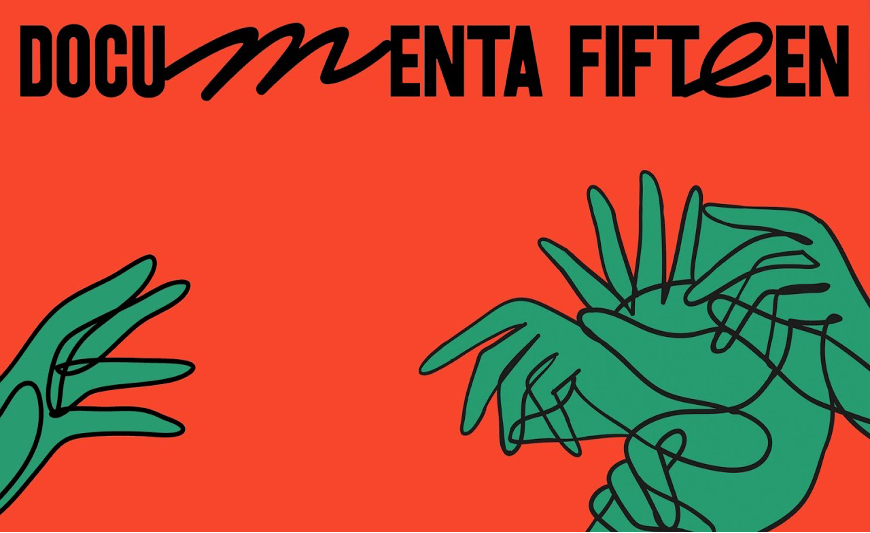
On Sunday 25 September 2022 the documenta was over. It was about time. Because for 100 days the event that was supposed to inform the public, with exhibits, about current developments in the art world did almost exclusively one thing: it got the world’s intelligentsia to debate whether or not anti-Semitism should be allowed in Germany, in Europe, in the “West” in general – but also just about anywhere. In fact, one party claimed that antisemitism was a problem of the northern hemisphere, and especially of Germany, and apologised for offending this all-German sensitivity by exhibiting antisemitic cartoons, while pointing out that in the context of their creation such works could not be antisemitic, since antisemitism is a product of the West. And on the other side, legitimately, they did not want to give in to the idea that hatred of Jews is everywhere redhibitory.
The last act of this conflict took on a particularly absurd aspect: a commission of specialists in anti-Semitism (which took two months to discover a set of Palestinian propaganda films glorifying the Japanese terrorists who committed the attack on the Lod airport in 1972 and whose existence was reported in the press as soon as the exhibition opened, including in the columns of K.) declared, 15 days before the end of the documenta, that these films should be better contextualised than they were, or even simply removed, since this kind of propaganda is clearly antisemitic.
In response, the organisers of the documenta publicly accused these specialists of racism. Just before the end of the exhibition, the front lines had become quite clear. Those who believe that anti-Semitism can be found among the oppressed of the world (among whom the organisers and artists of the documenta) are basically racists. So let us be clear: if we really want to be in solidarity with people from the southern hemisphere, if we really want to avoid racism towards them, then this must be measured by our ability to close our eyes to this anti-Semitism, to say that it is not so.
If this is the new criteria for real solidarity with the oppressed, then the organisers, artists and organic intellectuals of the exhibition should not be too worried. During the event, the Anne Frank Institute in Frankfurt happened to have a stand in Kassel to explain the characteristics of antisemitism to the interested public. This was a largely German audience. In an interview published on the website of the Anne Frank Institute, the person responsible for this training programme, Julia Alfandari, gave an overview of the interactions with the public. The results show that when asked about the offending documenta piece, most visitors thought that it was not antisemitic, but merely critical of the State of Israel, and were convinced that it had been dismantled at the request of that State. Another, equally important part of the audience considered that the dismantling was a matter of censorship (“like under the Nazis”), and that there was no need to make so much noise for a few performances. Many in the same audience were dissatisfied with the attention paid to Jews in general, thought that Jews had Germans “under their thumb”, and expressed concern about Germany’s relations with foreign countries that were currently being corrupted by Jews. Finally, some were convinced that the painting was exposed to create a big enough scandal to divert international attention from the ‘abuses’ committed by the IDF in the occupied territories. In short, that the whole thing was a Mossad operation.
These results of this wild investigation (which so far has not been methodically taken up), are all the more astonishing as the Bertelsmann Foundation published in September a quantitative study on the relationship between Germany and Israel. If this study produces some worrying results, such as the one showing that more than 50% of Germans would like to finally put an end to the memory of the Shoah, it also establishes that antisemitic prejudices (still affirmed by 30% of the German population) disappear as the level of education of the respondents increases. It is reasonable to assume that visitors to an exhibition of contemporary art tend to belong to the educated classes. Perhaps the reason for the contradiction between what the employees of the Anne Frank Institute reported and what the Bertelsmann
Foundation study found is that according to the study, Germans still feel a certain historical responsibility towards the “Jewish people” (especially in the 18-29 age group, 44% feel this responsibility), but this sense of joint obligation is not necessarily transferred to the State of Israel – only 27% of the respondents think that Germany has a special responsibility towards this state. If these results are correct, they may partly explain the strange behaviour of the German enlightened bourgeoisie that the Anne Frank Institute has reported: interpreting antisemitism in terms of criticism of the State of Israel seems to relieve Germans who do not feel responsible for the State of the Jewish people, but only for this mysterious people of which, according to their own admission (according to the same Bertelsmann Foundation study) 90% have never met a single member.
What fantasy they feel responsible for, no one knows. So far no research institute has had the curiosity or the courage to investigate this. But what seems certain is that the fight for the extension of the “Israel-criticism” zone at the expense of the “antisemitism” category still has a bright future in Germany, where, as we know, Gemütlichkeit is a value that matters. And what could be more comfortable than a phantasmatic responsibility towards a phantasmatic people, which in any case risks nothing, since when it is attacked, it is in fact a foreign state that is at stake – this state that claims to be Jewish and of which, in the best of cases, one has nothing to do with it.
Julia Christ, 5th of October 2022
Notes
| 1 | https://documenta-fifteen.de/pressemitteilungen/presseinformation-zur-verdeckung-einer-arbeit-von-taring-padi-auf-der-documenta-fifteen/ |
| 2 | Ibid. |
| 3 | https://documenta-fifteen.de/pressemitteilungen/statement-von-dr-sabine-schormann-zur-deinstallation-des-banners-peoples-justice-von-taring-padi/ |
| 4, 5 | https://documenta-fifteen.de/pressemitteilungen/findungskommission-der-documenta-fifteen-zur-deinstallation-von-peoples-justice/ |
| 6 | https://documenta-fifteen.de/pressemitteilungen/dismantling-peoples-justice/ |
| 7 | https://documenta-fifteen.de/pressemitteilungen/dismantling-peoples-justice/ |
| 8 | https://documenta-fifteen.de/pressemitteilungen/statement-von-taring-padi-zum-abbau-des-banners-peoples-justice/ |
| 9 | https://documenta-fifteen.de/pressemitteilungen/statement-von-taring-padi-zum-abbau-des-banners-peoples-justice/ |
